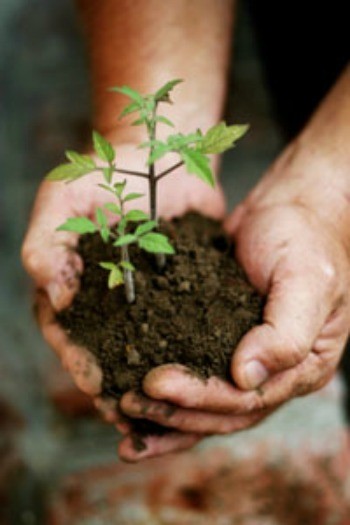During WWII, Britain and the United States pushed their citizens to plant "victory gardens." These gardens were marketed to help the war effort by reducing the demand for food on the country (people grew their own instead of purchasing it), thus reducing the cost of food for the troops. Yet, the victory gardens also served another purpose; they boosted the moral of citizens on the homefront by giving them the satisfaction of "doing their parts for the war effort."
Growing our own vegetables makes economic sense, especially since we have the luxury of grocery stores to back us up in case of a bad growing season. One $2 tomato plant will yield a few pounds of tomatoes (possibly $2.49 per pound in stores.) Had I planned earlier, I could have saved more by starting my tomato plants from seeds, but my investment will still pay off. Factoring in the water they require and tomato cages, I'm still reaping economic benefits of my harvest.
Organic foods are expensive. Yet, homegrown gardens can easily be organic without the extra cost. I know what I'm putting on my vegetables, and I know if they've been chemically treated or not. For organic fertilizer try disposing of your kitchen scraps in the soil. For years we've buried banana peels, apple cores, and lettuce hearts in our garden between our plants, and we've had wonderful harvests and dark, rich soil.
To avoid pests without using chemicals, try companion gardening. Many books are available that describe good growing partners. One common pest controlling plant is said to be marigolds. By planting my marigold seeds in my garden beside my tomatoes, I not only have a pretty garden but pest free tomatoes. (The bugs are said to dislike the smell of the marigolds.) A simple wire garden fence keeps larger pests away, and groundhogs as well as several bugs dislike the smell of dryer sheets. Tie the sheets around the fence posts to discourage pests without spraying chemicals.
Our victories in our garden will be plentiful. Our family will get fresh air and time together working on a common goal. We'll eat healthy, homegrown food that gives us satisfaction both in our stomachs and in our hearts. It will be an economic victory over high food and gas prices as well as imported produce. Best of all, we'll revisit some old-fashioned values.

Add your voice! Click below to comment. ThriftyFun is powered by your wisdom!
Don't forget the next step - preserving your harvest. Getting back to basics - planting, tending, harvesting, eating/enjoying/sharing, and lastly, preserving. Many books and options exist for preserving your harvest when you receive more bounty than you can use at any time. An additional bonus will be homemade preserved fruits/vegetables for money saving gifts.
Add your voice! Click below to comment. ThriftyFun is powered by your wisdom!